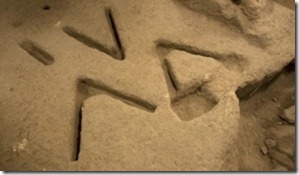A lecture series will be held next weekend in Boca Raton, Florida, with leading scholars of the Second Temple period. The conference is open to the public and free of charge. The purpose of the meetings is described as follows:
Focal Question: How significantly and in what ways did the Temple and its cult help define the social and spiritual life of early Jews, including Jesus and his earliest followers?
Purpose: To correct the popular impression that Jesus despised the Temple and its cult because he attacked the money changers and was apparently condemned by the leading high priests [the historicity of each event must be discussed]. To raise questions which are focused on pre-70 Jews, Jesus, his followers and the Temple and to seek a new consensus on the grid questions.
Lectures include:
Leen Ritmeyer: “Imagining the Temple Early Jews Knew”
Response: Dan Bahat: “Imagining and Excavating the Temple Area”
Dan Bahat: “The Architecture of the Temple”
Motti Aviam: “Temple Symbolism and the Lives of Galilean Jews”
Lawrence H. Schiffman: “The Importance of the Temple for Early Jews”
Dan Bahat: “Worship in the Temple”
James H. Charlesworth: “Jesus, the Temple Cult, and the Temple”
Gary A. Rendsburg: “The Davidic Psalms and the Temple”
James H. Charlesworth: “Jesus’ Followers and the Power of the Temple”
Harold W. Attridge: “The Temple and the High Priestly Jesus in New Testament Texts”
Loren Stuckenbruck: “The Temple in the Jewish and Christian Apocalypses”
PANEL DISCUSSION
An extension of the symposium is being held on Dec 18-19 in Miami Beach, Florida.
Though I have serious misgivings about the stated purpose of the symposium, I would certainly attend if I was able.
Full details are here. An RSVP is requested.
